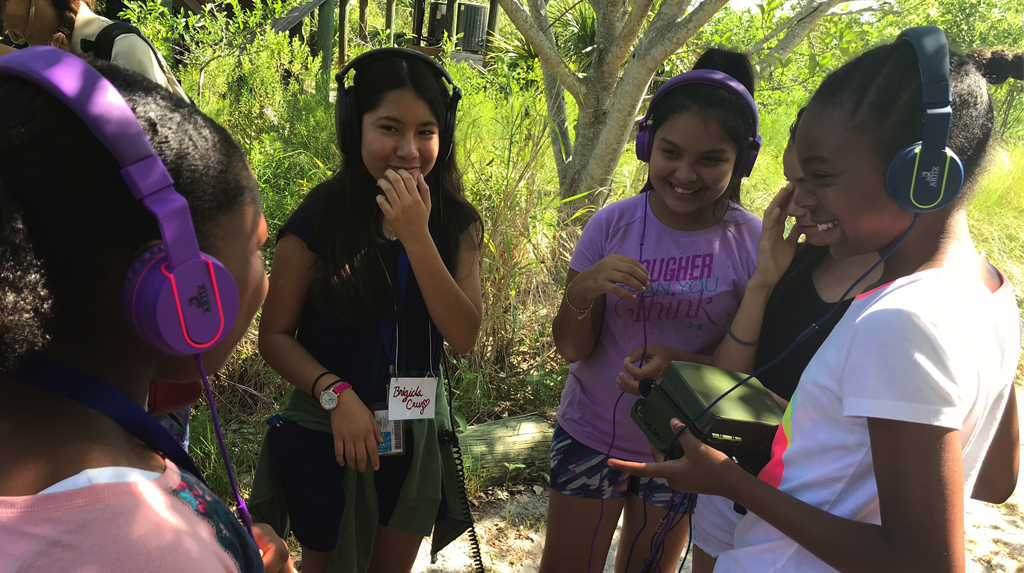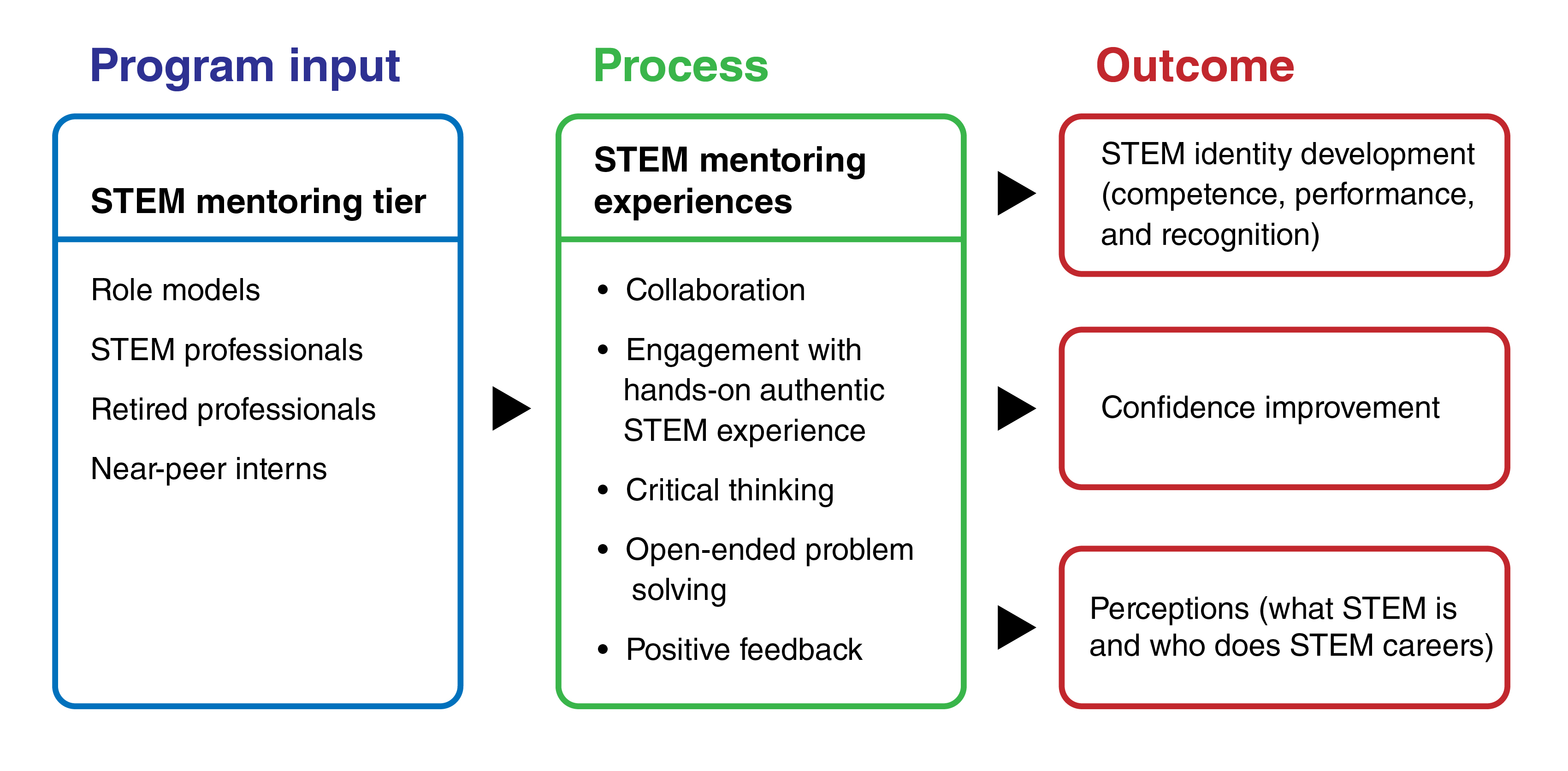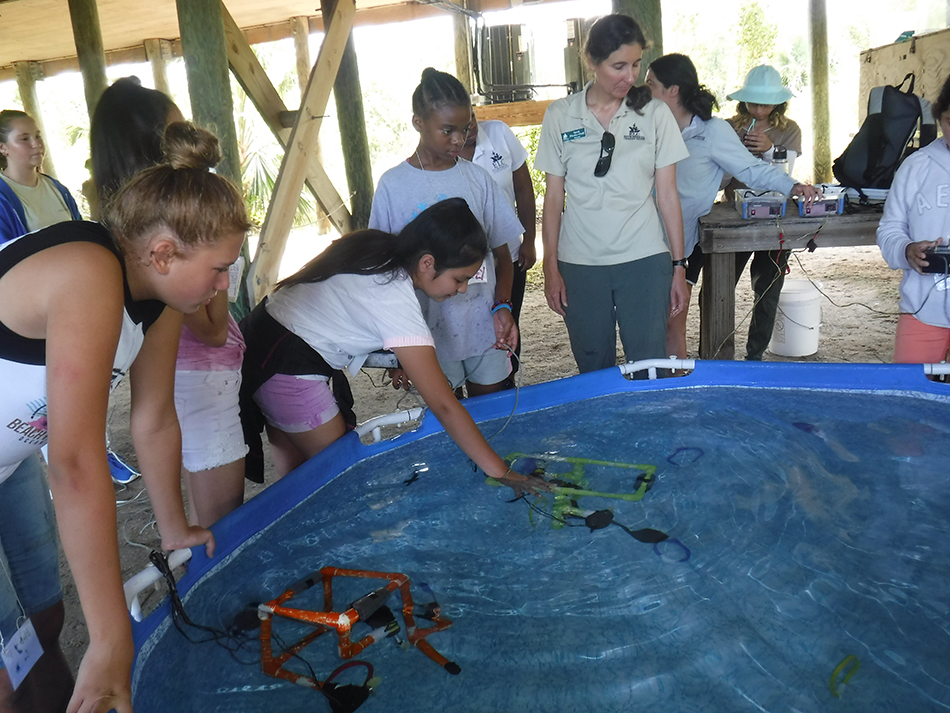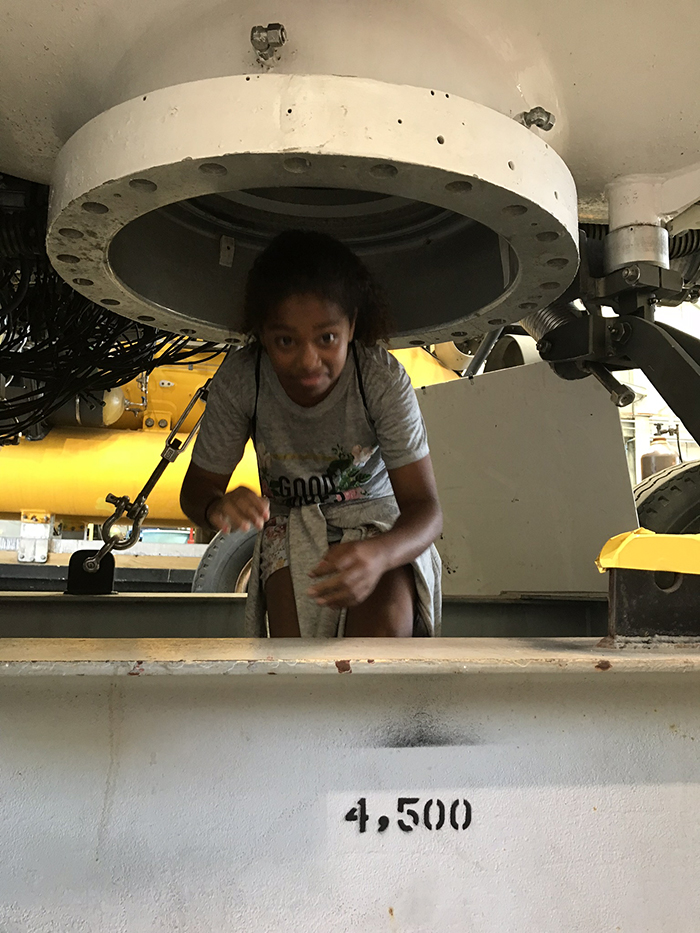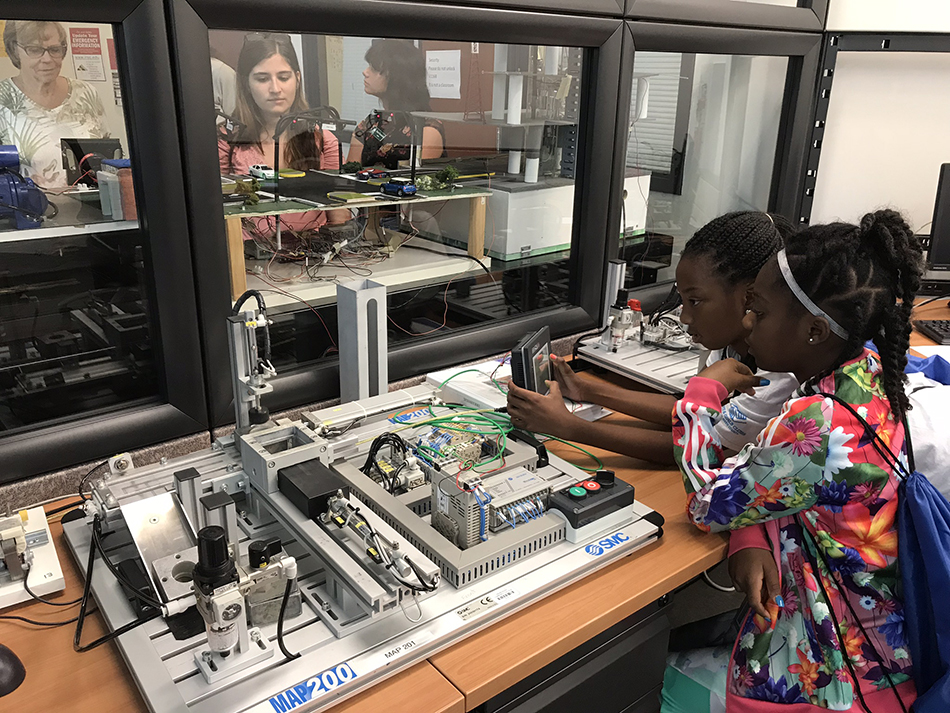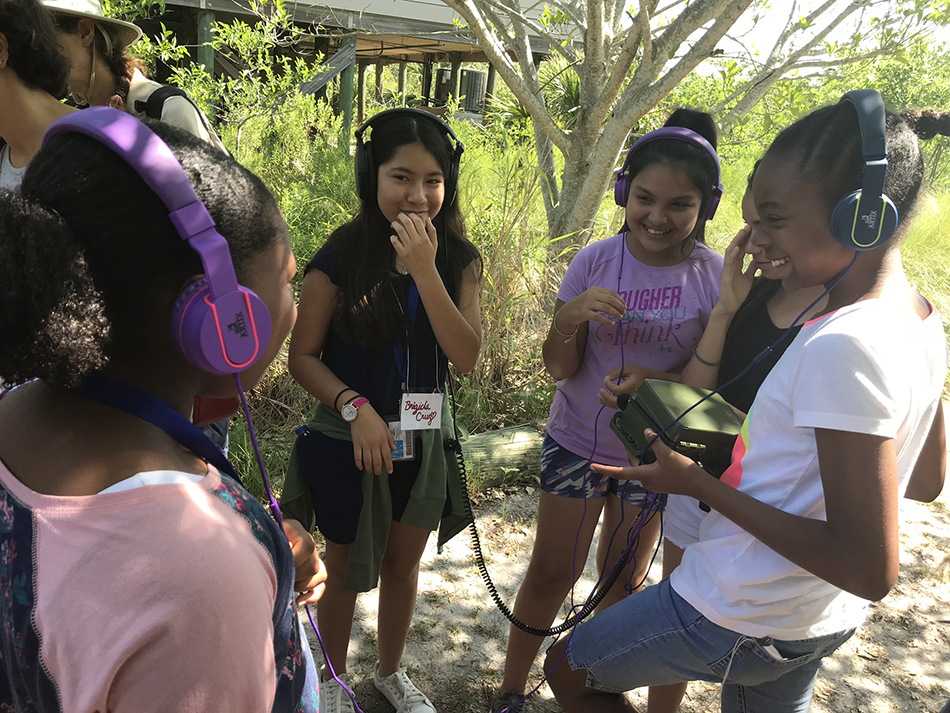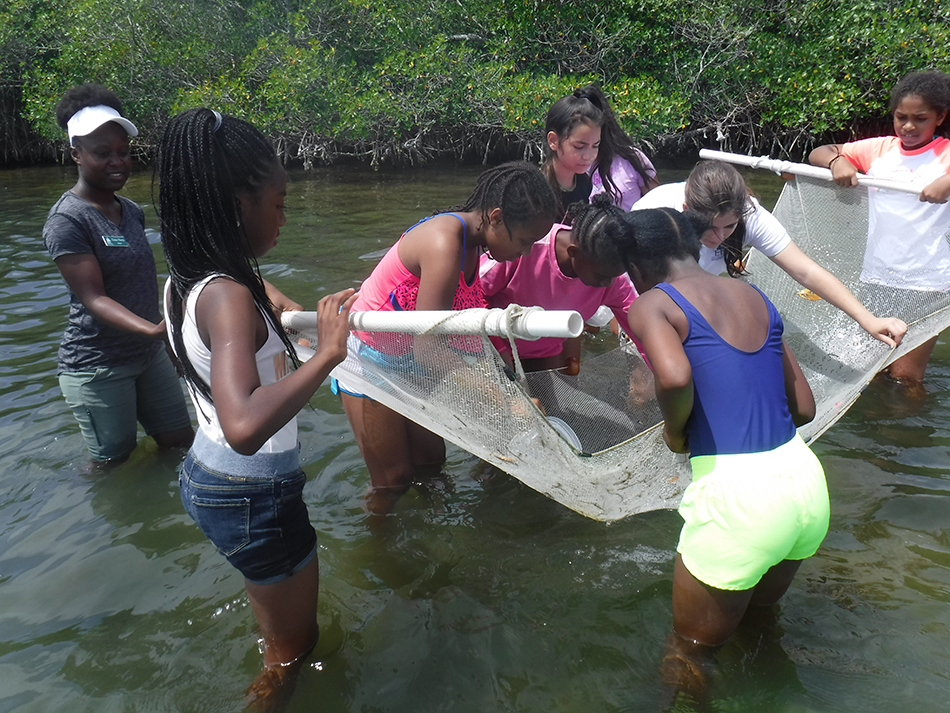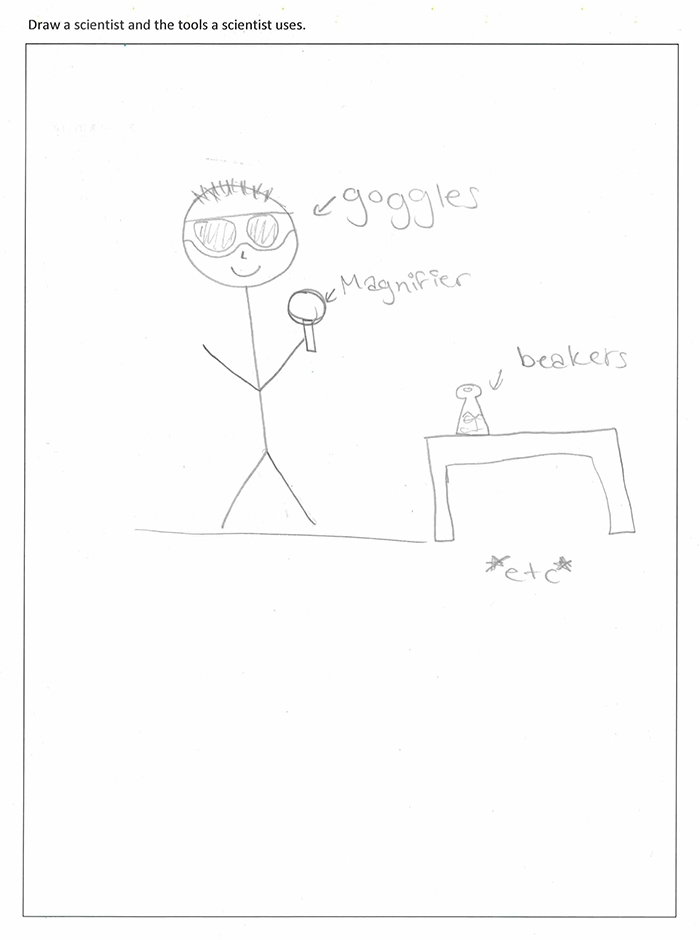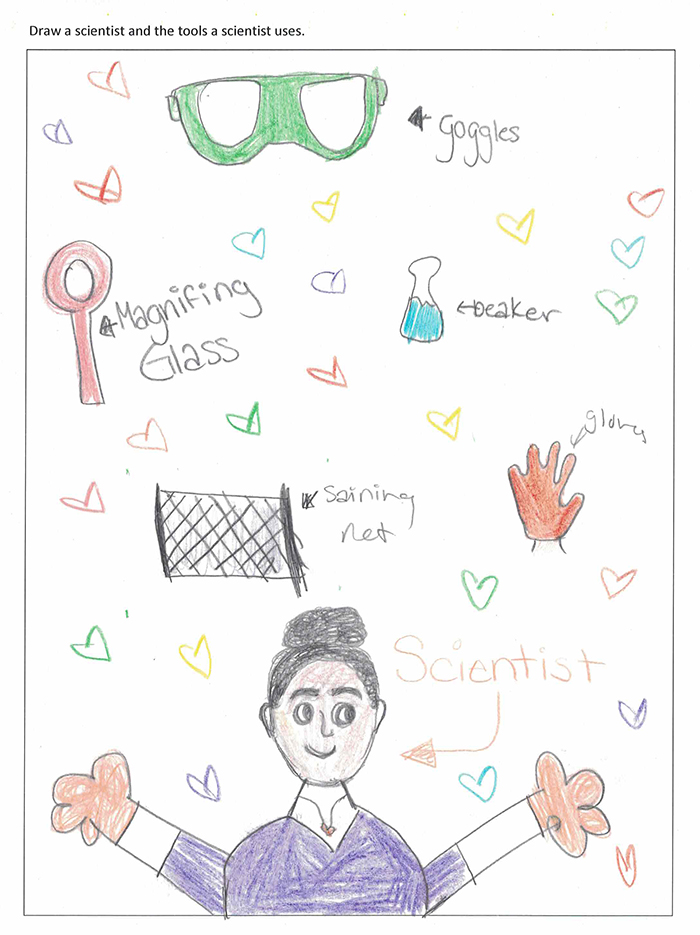Innovation and progress in the science, technology, engineering, and math (STEM) workforce is critical to the growth of the United States in the global economy (NRC 2007). Men are more likely to pursue a degree in STEM fields, with almost 27% of malef college freshmen planning to major in STEM compared to only 8% of female freshmen in 2014 (National Science Board 2016). While women comprise half of the U.S. workforce, they are underrepresented in STEM, with many STEM fields reporting fewer than 25% female employees (NSF 2016). Young Black and Hispanic women, as well as those from low socioeconomic upbringings (low socioeconomic status refers to those who qualify for government-sponsored assistance programs), are less likely to cultivate and maintain an interest in STEM compared to their peers (Saw, Chang, and Chan 2018). While there was a 4.8% growth in participation of minority women in STEM from 1996 to 2016 (NSF and NCSES 2019), gender gaps in engineering and the natural sciences grew larger between 2000 and 2015, especially among African Americans. The proportion of bachelor’s degrees awarded in engineering and natural sciences to African American women declined from 2000 to 2015 (NSF and NCSES 2019). The middle school years are identified as a critical period to engage young women in STEM and expose them to STEM careers, as studies have shown that during this time period, confidence in STEM decreases despite displaying similar abilities to male peers (Horting 2016).
Mentorship programs can connect young women with female professionals working in STEM careers to build confidence, identity as potential scientists, and perceptions of what STEM fields are and who works in those majors (Sanders 2005). Interaction with role models expands the perspective of youth to help them envision what STEM fields are, who works on STEM fields, and what they can achieve. Zirkel (2002) showed that youth engagement with role models from the same socioeconomic status, race, and gender helped them to improve academic performance, adopt more achievement-oriented goals, and think more about future careers. In Zirkel’s study, youth also identified adults as role models more frequently than peers when the adults were of the same race and gender as the youth (Zirkel 2002). Participating in STEM mentorship programs throughout the middle school years increases the likelihood that young women will seek out successful professional women in the STEM workforce during their careers, which ultimately improves workforce retention and performance of both mentors and mentees (Gartner 2006). The goal of our study is to investigate the contribution of the mentorship programs in STEM education of young women from low socioeconomic backgrounds.
We designed a five-week STEM Mentorship Program to engage these young women with STEM topics. The main objectives of this STEM Mentorship Program were to help participants:
- explore a new STEM-oriented identity;
- be able to envision themselves working in STEM fields;
- increase confidence in their ability to achieve in STEM fields; and
- gain broader perceptions of what STEM is, who participates in STEM careers, and what tools are used in STEM.
We used a formal group mentorship framework to design our STEM Mentorship Program. The purpose of this framework was to build meaningful connections between participants and mentors, who included high school and college students as well as active and retired professionals. Here, we describe the details of the program, its strengths, and suggestions for how other organizations may adapt it to fit their needs.
The Environmental Learning Center (ELC)
The STEM Mentorship Program is offered by the Environmental Learning Center (ELC), a nonprofit nature center founded in 1988 in Vero Beach, Florida. The ELC is a 64-acre sanctuary located on an island in the middle of the Indian River Lagoon, once considered one of the most diverse estuaries in North America. The ELC campus contains a variety of habitats, such as upland forest, freshwater pond, mangrove forest shorelines, and subsurface seagrass beds. This sanctuary provides an idyllic outdoor living laboratory for authentic STEM experiences. The ELC provides the setting and the tools necessary for meaningful field science exposure, including specialized staff that provide project leadership, coordination and instruction and serve as experts in local marine ecology.
An overview of the STEM Mentorship Program
The program was designed in 2016 to address the gender gap in STEM in the local community. Initially five days long, the program was expanded to ten days (five weeks, two days per week) in 2017 and 2018. The goal of the program was to expose young women in middle school to STEM disciplines in natural resources and build their interest and confidence in STEM and pursuing STEM careers. This was achieved by providing real workforce development opportunities in the local marine-based economy in coastal Florida, through activities related to marine ecology, marine technology and engineering, and soundscape ecology.
The STEM Mentorship Program used a formal group mentorship framework to connect participants with mentors and role models (Figure 1). Several mentors worked with the young women each week including near peers—high school and college interns majoring in STEM. Some active and retired STEM professionals also served as mentors by working alongside participants each week, while others led single workshops. The near-peer mentors came from similar ethnic and socioeconomic backgrounds as the participants, to promote self-identification and relevance for mentees. During the program, students engaged in hands-on authentic STEM workshops (Figure 2). The STEM Mentorship Program helped participants build their skills, take on new STEM identities, and improve their confidence and their perceptions of STEM (Figure 3). The STEM Mentorship Program environment was similar to that of the research-based SciGirls Seven Strategies previously published in Connected Science Learning, which outlines what young women need in their working environment to successfully engage with STEM (Karl, McLain, and Santiago 2017). As such, the STEM Mentorship Program emphasized building confidence in young women by exposing them to collaborative environments, promoting open-ended team problem solving and critical thinking, and connecting them to female role models who have succeeded in STEM fields. Similarly to SciGirls Strategies, the mentors also delivered positive feedback on the students’ efforts, approaches, and behaviors as they participated in activities.
Prior to the program, the near-peer mentors were hired through an extensive application process that included personal references and background checks. They also participated in three days of training to improve outdoor water safety skills and interpretation training to improve communication skills for working with youth. Many of the retired professionals were former teachers with extensive experience working with youth. These authentic STEM mentors and role models were critical to engaging participants and creating a supportive learning environment.
Table 1
STEM Mentorship Program activities and the learning objectives for each day of the 2018 program.
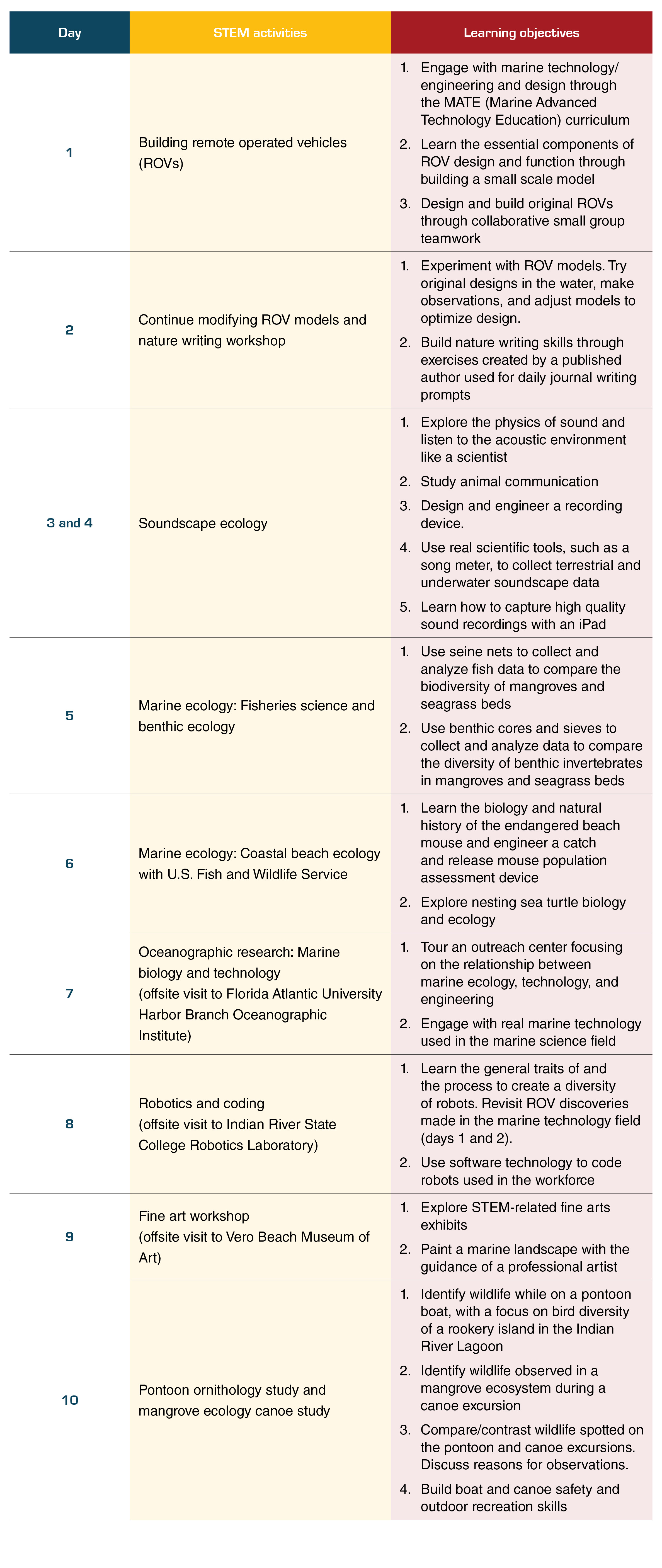
Participants worked with mentors during every hands-on STEM workshop. For every four participants, there was one near peer and one retired professional mentor. The mentors led small-group discussions and activities to facilitate collaboration, critical thinking, open-ended problem solving, and engagement with authentic STEM materials. Mentors also administered support to participants to encourage active involvement in the STEM activities (Figure 1-B).
Collaboration is key to enhancing the quality of STEM offerings in the mentorship program. Twelve local organizations took part in order to provide mentors and role models, real workforce-based STEM experiences led by female STEM professionals, funding, and transportation. These partner organizations ranged from area colleges, universities, and conservation organizations to the local art museum and theater. An ELC staff ecologist served as the central point of contact and managed collaborator, partner organization, and role model/mentor relationships. Partners included the Vero Beach chapter of the American Association for University Women, Quail Valley Charities, United Way, Grand Harbor Community Outreach, and the local Boys and Girls Clubs.
During the STEM Mentorship Program, participants explored a new topic each week, exposing them to different facets of the coastal Florida economy (Table 1). Topics included marine ecology, marine technology and engineering, and soundscape ecology. Workshops relating to each topic were led by professional female role models who used inquiry-based, hands-on, open-ended activities with small teams of middle school students. Participants were encouraged to work in teams and use their problem solving skills as they went through the various learning modalities.
The STEM program kicked off with a series of remote operated vehicle (ROV) building workshops to explore marine technology, engineering, and design (Figure 2). An ELC staff marine ecologist used the Marine Advanced Technology Education (MATE) curriculum for this workshop, in which participating teams learned the basic principles of how ROVs function and had the opportunity to prototype their own designs through an iterative design process. They tested their ROVs in the water and then modified the designs to improve ROV performance and functionality. The marine technology concepts and collaborative team-building skills they learned in these introductory workshops were then reinforced throughout the program.
Offsite STEM workshops at the Indian River State College (IRSC) Robotics Laboratory and Florida Atlantic University Harbor Branch Oceanographic Institute (FAU-HBOI) built on the marine technology ROV curriculum. At FAU-HBOI, the young women observed and interacted with Human Operated Vehicles (HOVs), also known as submarines, drifters, data loggers, and a variety of other marine technologies used in the field (Figure 3). They also learned to code robots at the IRSC Robotics Laboratory (Figure 4). This level of collaboration with local colleges and universities enhanced the quality of our offerings and provided the participants with real-world exposure to marine technology and scientific innovations.
During the soundscape ecology week, participants worked with an ELC staff soundscape ecologist to explore acoustic environments found in the marine and upland habitats at the ELC. For this portion of the program, the participants applied Your Ecosystems Listening Labs (YELLs), an inquiry-based curriculum designed at the Center for Global Soundscapes at Purdue University. They conducted both terrestrial and underwater sound scavenger hunts using Wildlife Acoustics Song Meter 4 technology that is used by professional soundscape ecologists (Figure 5). Using acoustic devices during sound walks and scavenger hunts, participants gleaned new awareness of the diversity of sounds in their environment and the interaction between natural sounds, such as those from cicadas and birds, and human-made sounds. The young women listened to the soundscape of the mangrove forests and upland habitats at the ELC, and they listened in real time to the underwater marine soundscapes of the Indian River Lagoon using a hydrophone. They were exposed not only to the natural sounds made by snapping shrimp and fish, but also to the noise pollution created by passing boats. Working with authentic technology to listen to and record terrestrial and marine underwater sounds offered a novel approach for these young women to study marine ecology. Participants also learned how to record high-quality sound files on iPads, allowing them to continue to explore soundscapes in the world around them beyond the program.
Marine ecology was the focus of multiple days of the program, which spanned fisheries science, benthic (bottom of water body) ecology, coastal beach ecology, and mangrove ecology. The participants applied the scientific method and real scientific tools used in the field to ask questions, collect data, analyze the data, and discuss their findings. They studied and assessed the impact of habitat type on fish and benthic invertebrate populations, counted and measured different organisms, and then graphed their results (Figure 6). These participants also had opportunities to build the outdoor water skills necessary to be a successful marine ecologist and improved their confidence in their abilities to canoe, boat, and swim. As a water safety precaution, life jackets were required for all outdoor boating and canoeing activities. Additionally, an extensive canoe skill demonstration was conducted beforehand. Canoes held up to three participants, or two participants and a mentor. To improve safety for participants with minimal canoeing experience, a mentor was placed in the back to assist with paddling and steering. Swimming only occurred at beaches with lifeguard supervision. For many of the participants from low socioeconomic backgrounds, their trips to the ELC were their first exposure to these types of outdoor activities and were reported to be major highlights of the program.
Participants
Our 2018 participants were 18 young women from low socioeconomic backgrounds entering grades 6 through 8 in the upcoming school year. The participants’ ethnicities were:
- Black/African American (n = 6),
- White/Caucasian (n = 6),
- Hispanic/Latina (n = 4),
- Black/African American/Asian (n = 1), and
- Other (n = 1).
The program can accept up to 20 participants each year. Participants were recruited through Boys and Girls Clubs. Some of the 2018 participants also attended the 2016 or 2017 STEM Mentorship Program. The near-peer high school and college mentors were recruited through teachers, Boys and Girls Clubs, the Gifford Youth Achievement Center, and advertisements on the ELC website and through social media. The retired mentors were recruited through the Vero Beach chapter of the American Association of University Women.
Program evaluation
To understand the impact of participation in the STEM Mentorship Program, we assessed and documented participants’ cognitive and non-cognitive development throughout the program in the summer of 2018. We utilized both quantitative and qualitative methods including surveys, drawings, informal interviews, and pre- and postprogram interviews (hereafter referred to as “pre-post survey,” “pre-post drawings,” and “pre-post interviews”). Our response rate was 78% for the assessment activities. In addition, we collected field observations throughout the program.
Identity is described as an interaction between an individual’s self-image and the image that others have of that individual (Erikson 1980). The participants’ development of STEM identity was tracked through changes in their competence, performance, and recognition by others (Carlone and Johnson 2007). We used field observation and postinterview questions to understand participants’ competence, knowledge, and understanding of science content; their performance in STEM activities; social performance of relevant scientific practice (e.g., ways of talking or using tools); and recognizing oneself and gaining recognition by others as a “science person” while engaging in STEM activities. The pre-post questionnaire that we used included four questions that asked participants to rate their confidence in STEM fields on a scale of 1 to 6, with 1 being the lowest and 6 being highest (Appendix A in Supplemental Resources). The last question used a 5-point Likert scale and asked participants about their perceived impact of the program on their confidence to achieve in STEM.
To measure the participants’ perceptions of who does science, we used the postinterviews as well as drawing activities conducted before and after the mentorship program. The prompt of the pre-post drawing was “Draw a scientist and the tools a scientist uses,” to assess their perceptions about science and technology.
Interviews were the primary source of data and were used to measure identity, confidence, and development of perceptions about science and technology. The interviews were transcribed and analyzed through inductive process and content analysis of participants’ responses. Field observations and informal interviews were collected to gain an understanding of the participants’ performance, their interaction with each other, interaction with the mentors, and their perceptions of the setting during the STEM activities, and offered a better perspective of cognitive and affective development.
Program outcomes
Data analysis showed that participation in the program positively affected participants’ cognitive and affective development. Engaging in new science practices enabled participants in the STEM Mentorship Program to explore a new sense of identity, gain confidence in doing STEM activities, and broaden their perceptions of what STEM is and who participates in STEM careers.
STEM identity
We found that participants’ self-image and personal STEM identity expanded during the program as they gained competence and experience in using tools and technologies. Approximately half of the participants reported improving their performance in using STEM tools and technology and began to recognize themselves and be recognized by others as future STEM professionals. The data showed that participants recognized that different activities related to marine technology, engineering, and designing and building ROVs had helped improve their STEM competence as they overcame the challenges as collaborative teams who worked with mentors and engaged in hands-on activities (the soundscape activities did not emerge as a highlight in postinterviews about building STEM skills).
In an interview, a young woman who came back for a third year shared that she decided to pursue a career in a STEM field in the future during her participation in the STEM Mentorship Program. She said, “I learned what I want to be when I grow up at ELC. Marine biologists like to learn, observe, and research about animals. I want to be a vet who specializes in marine biology so I can help the marine animals.” She also confirmed that the STEM Mentorship Program connected her to nature in a real and tangible way: “Before coming [to the STEM Mentorship Program], I was very skeptical, not really wanting to go outside. Once I came to ELC, while I was sitting in a canoe I thought… wow! This is so beautiful! I want to do this forever.” Through the STEM mentorship experience, this young woman found her passion for marine biology and gained emotional benefits from connecting with nature.
One student, returning for a second year, expressed an increase in her confidence when it comes to outdoor activities, as she is now willing to “get involved in outdoor activities.” She acknowledged that her competence in STEM also improved, stating, “I used to not be that good at science at school, but now I feel more prepared to go back to science class.” She also shared that her performance in STEM activities improved, as did her collaborative teamwork skills: “During my first attempt at building the ROV, I could not do it. The second attempt was better because [the] group figured out how to put the pieces together as a team.” She built strong relationships with mentors, teachers, and friends during the program, and felt that her friends recognize her as an artist now. She explained, “They say I should be an artist because I draw well.” This statement is consistent with her career interests, which have expanded from photography to other arts, such as painting. This is an example of how the STEM Mentorship Program can encourage participants to try out a new identity.
Confidence
Pre- and postsurveys, as well as the postinterview, measured the participants’ confidence in achieving a career in a STEM field and confidence in STEM skills. 100% of the young women expressed that their confidence in achieving a career in STEM had increased by the end of the program. When asked which specific skills had improved, the data showed that 14% of participants noted increased confidence in their science skills, 21% in technology skills, 41% in engineering, and 7% in math.
A student coming back for a second year affirmed that the program improved her confidence in being able to do science outdoors and expanded the scope of what she believed she could achieve in her career. She shared, “I used to go outside to just run around. During the program, I learned there are many things you can do outside scientifically; you just need parental supervision and knowledge of what you are doing.” She decided to become a marine biologist when she was very young, but after participating in the STEM Mentorship Program, she expanded her vision and said, “I learned I can do engineering or anything else in the marine field.” Her feedback is consistent with prior research that shows that young women thrive and build their confidence in environments where they can complete challenging tasks and grow their skills in hands-on workshops (Allison and Cossette 2007). This exposure is essential for these young women to pursue STEM careers and begin to move toward fields in which women and minorities are underrepresented (Karl, McLain, and Santiago 2017).
Field observations revealed the young women strongly connected with the near-peer mentors who led their small collaborative teams. One student built a close bond with an African American college student majoring in chemistry. The student described her mentor as “really nice, fun, [and] funny” and credited her with “helping…with many projects [during the STEM Mentorship Program].” She also enjoyed visiting the marine biology lab at the Florida Atlantic University Harbor Branch Oceanographic Institute and observing the female marine biologists in a collaborative setting. She shared that “it was nice to see women working together and accomplishing a lot,” adding that “women are really good scientists.” Another young woman interested in marine biology shared that the mentors inspired her and improved her confidence “to learn new things, try, [not] give up, and always find something new to learn.” The students created strong bonds with the near-peer mentors and were inspired by the mentors and active professionals to realize that women can achieve in science if they take risks, persist, commit to continuous learning, and work collaboratively.
STEM perceptions
We used postinterviews and a drawing activity to measure the development or change in participants’ perceptions of what STEM is, who participates in STEM careers, and what tools are used in STEM fields in natural sciences. In the pre- and postdrawings, the focus was science and technology. Participants were asked to “draw a scientist and the tools a scientist uses.” The results showed that there was an increase in the number of participants who drew women scientists in the postdrawings (71%) compared to the predrawings (21%), in which they more frequently drew male or gender-neutral scientists. The number of scientific tools increased in 79% of the participants’ postdrawings when compared with the predrawings, and 71% of participants drew new scientific tools that were used during the STEM Mentorship Program, such as acoustic monitoring equipment, seine nets, binoculars, benthic sieves, coring devices, and Remote Operated Vehicles (Figure 7).
Participants also showed greater depth of knowledge of what it means to be a scientist during the post-interviews. One young woman expanded her definition of a scientist from a conventional lab scientist to include natural scientists. In her interview, she shared, “I didn’t know [what] an ecologist was. I always thought that scientists were all lab scientists with chemicals and lab coats. Now I realize there are so many different kinds, such as ecologists—some study butterflies, water, dolphins.” Another young woman shared that her experience in the real-world workforce environment revealed that science was more challenging than she originally expected. She said, “I always thought scientists had a fun job, [but I] thought it would be easy. It’s actually quite hard, but still fun.” These young women expanded their perception of science and who does science through real encounters with STEM role models and mentors in real workforce environments, and through hands-on STEM experiences and experiments with real scientific tools.
Overall, the results indicated that the STEM Mentorship Program had a positive impact on participants and that, in addition to authentic STEM experiences, the interaction between participants and mentors led more of the participants to consider STEM careers. Frequent discussion regarding what to expect in high school and college academics and the college admission process was discovered to be a foundational connection between participants and mentors. Mentors built strong relationships with these young women by sharing their personal stories, and empowered them to be persistent in their studies, advocate for themselves, and be adaptable to achieve STEM careers. One student, inspired by the mentors, stated, “The mentors made me want to go back to school and keep learning.”
Recommendations and looking ahead
The three years of the STEM Mentorship Program and the program evaluation conducted in 2018 have showed us that the program model has strong potential to inspire young women to consider careers in STEM. Hands-on authentic STEM activities that promote critical thinking, open-ended problem solving, and positive interactions between mentors and participants created a learning context that promotes authentic STEM experiences. Our recommendations for developing a mentorship program are:
- Design a multiday mentorship program. Repeat visits over time allow participants and mentors to develop stronger bonds than single-day or single-week programs.
- Use near-peer and college student interns to maximize participant and mentor communication and connection.
- Incorporate inquiry-based engineering workshops. The collaborative small-group problem solving workshops where the participants design, build, and redesign help participants build their STEM skills and social and emotional skills such as teamwork and group problem solving.
- Provide opportunities for participants to work with authentic STEM technology, thus providing novel experiences for participants to engage in authentic scientific practices.
- Create hybrid programs that bridge academics with outdoor exploration to provide nature-rich experiences in a STEM learning context.
Conclusion
This article reports on the potential of summer STEM-focused mentorship programs in an authentic outdoor environment to connect young women with STEM careers in natural sciences. The data presents examples of how young women explored new identities, improved their confidence in their ability to conduct outdoor STEM activities, built skills to pursue STEM careers, and benefited from interaction with their peers and mentors. The context of the STEM Mentorship Program created meaningful experiences for participants by using informal settings where participants engaged in field activities. Some aspects of the STEM workshops can easily be adapted and transferred to conventional formal education settings during the school year. Our long-term goals are to expand the STEM Mentorship Program to a year-round experience, to train local classroom teachers and role models in the equitable teaching strategies used in our program, and to introduce STEM workshops used in the program into formal learning classrooms.
Sarah Rhodes-Ondi (sarah@conserveturtles.org) is community stewardship coordinator of the Sea Turtle Conservancy at the Barrier Island Sanctuary in Melbourne Beach, Florida. Maryam Ghadiri (ghadiry85@gmail.com) is a postdoctoral researcher at the Center for Community and Citizen Science at University of California, Davis, in Davis, California.




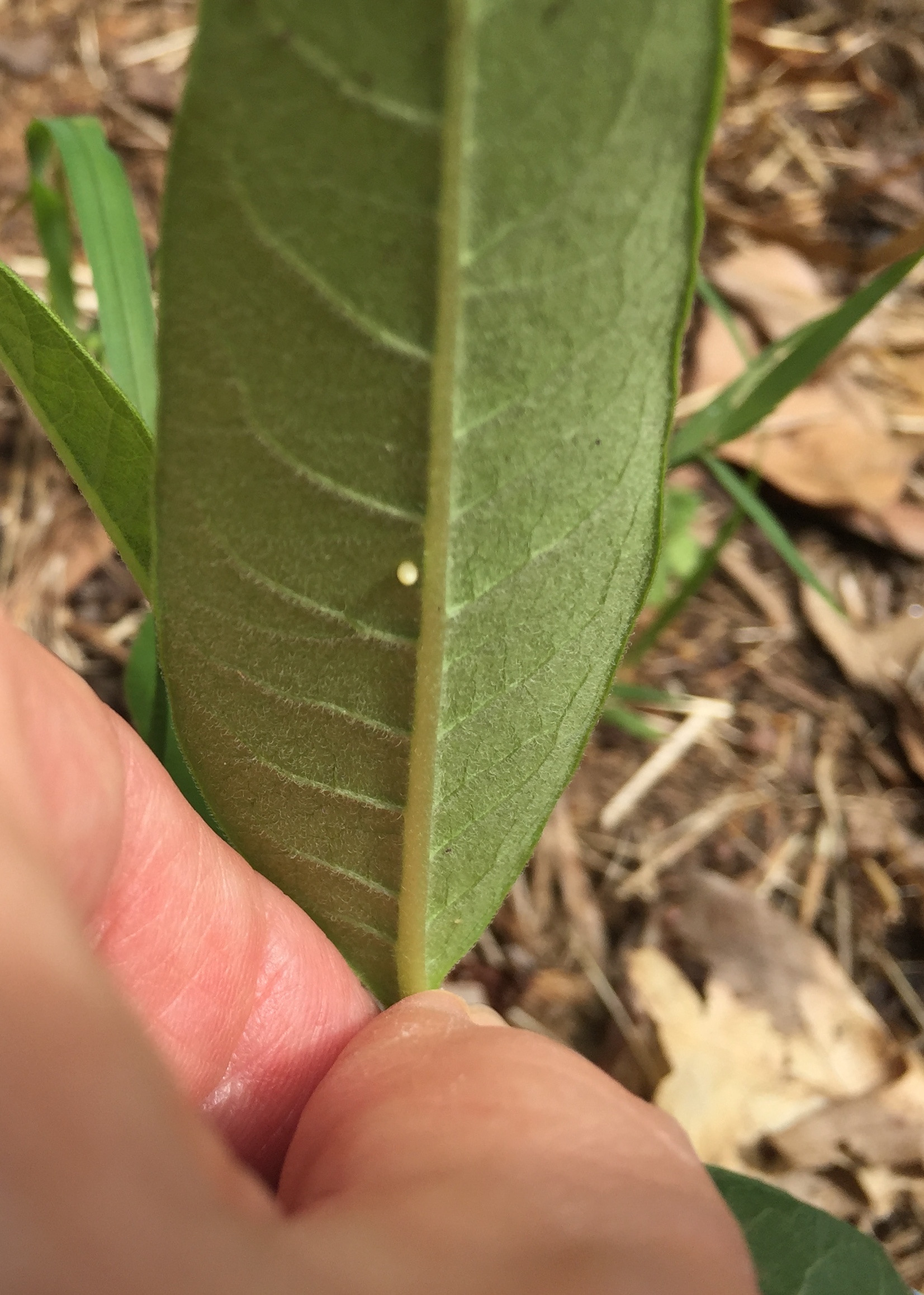
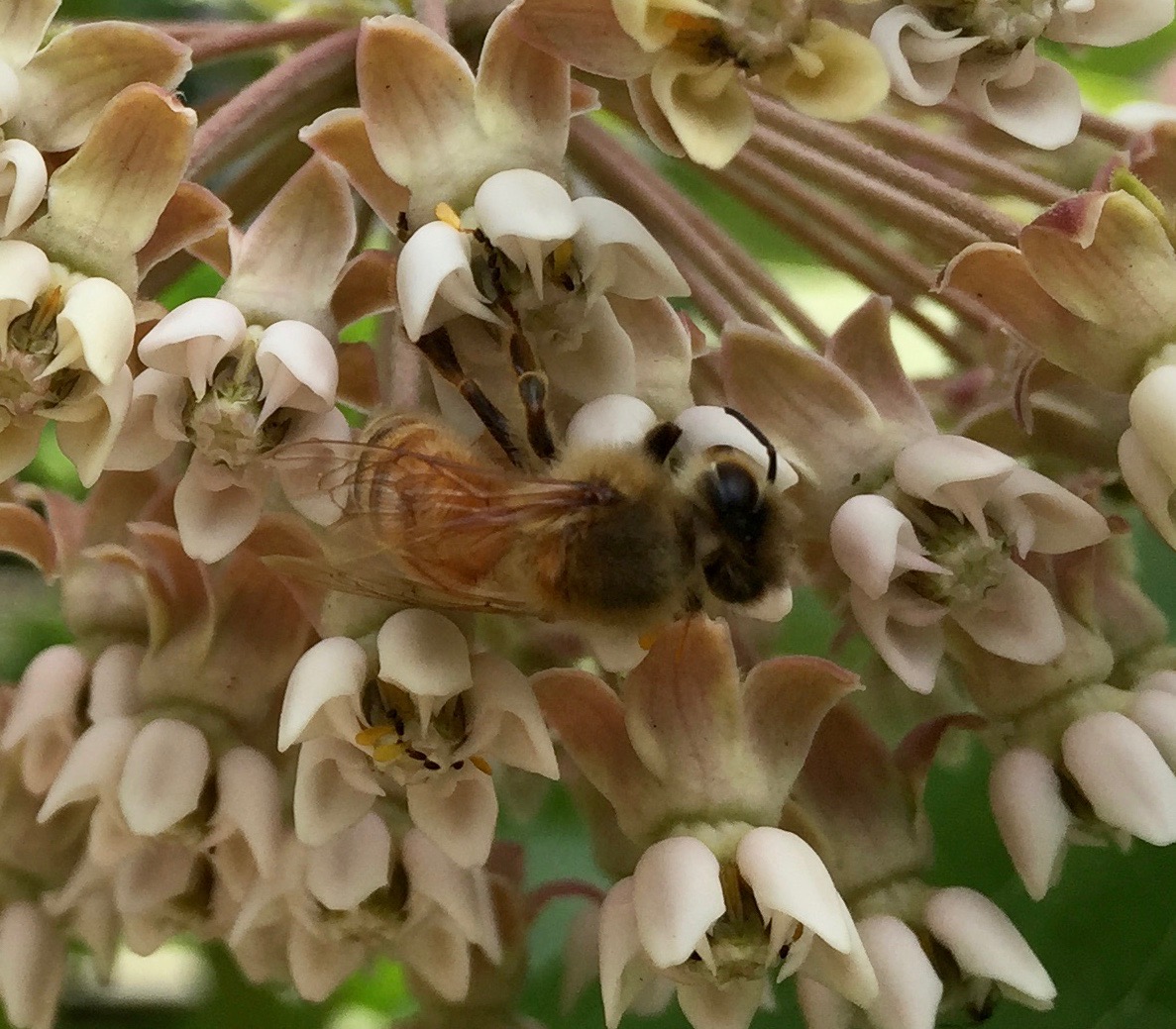
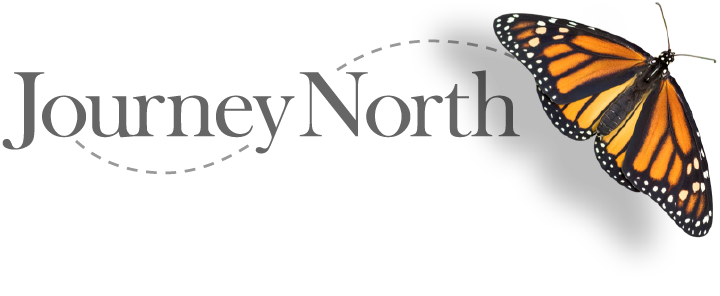
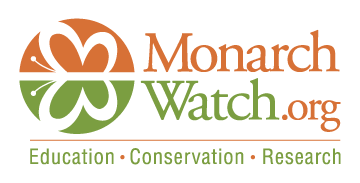
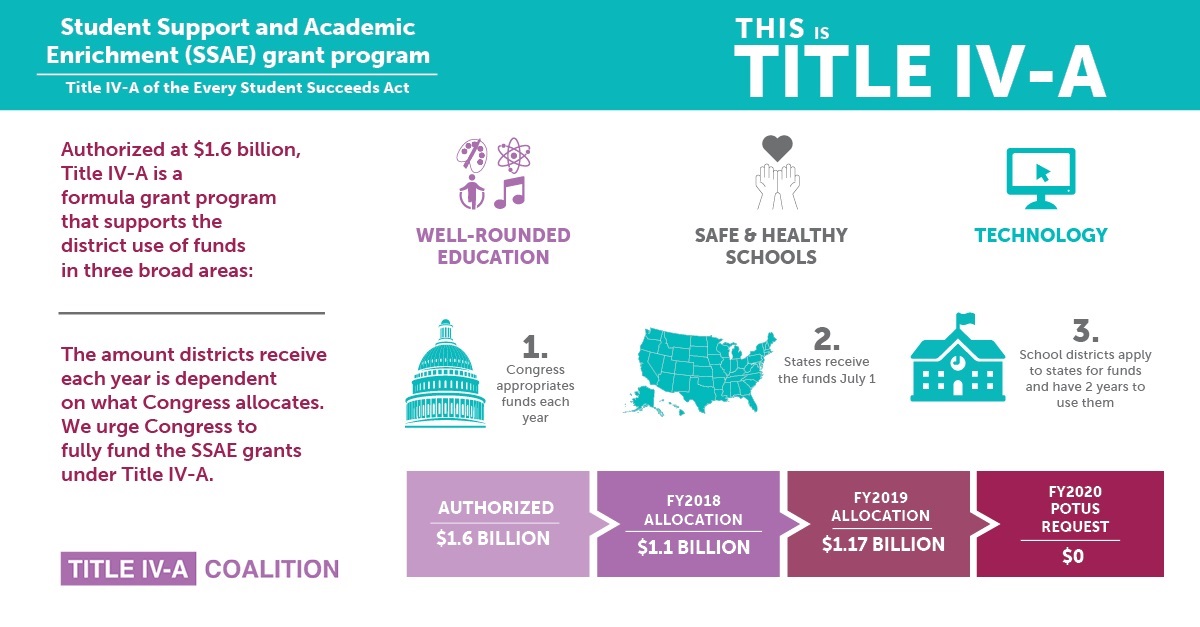
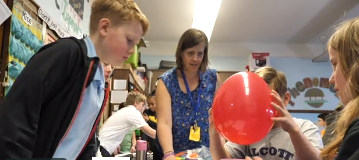

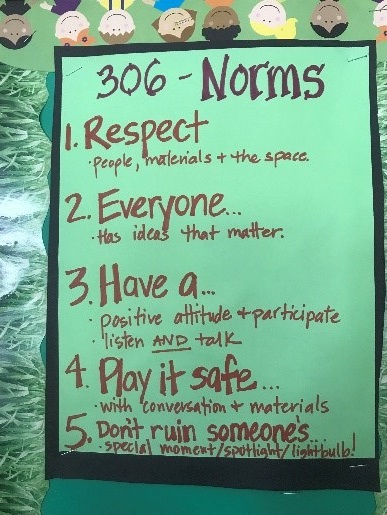
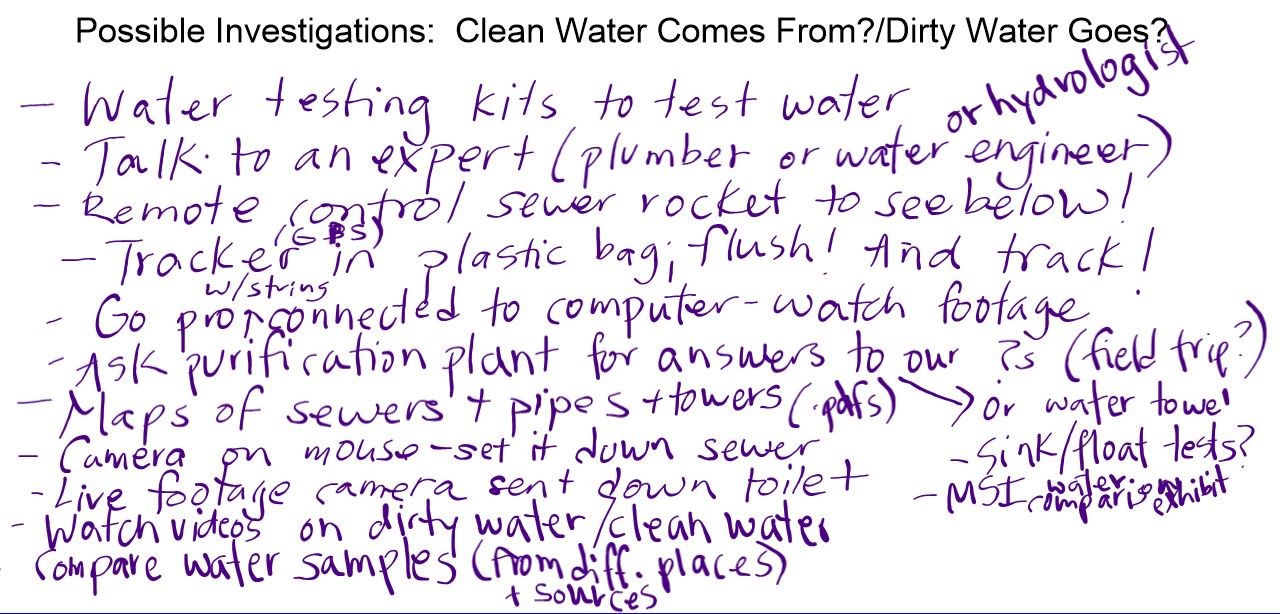
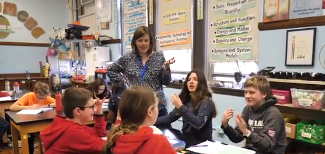
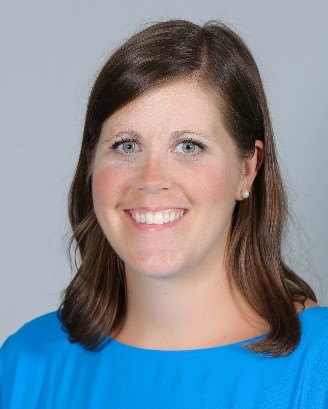
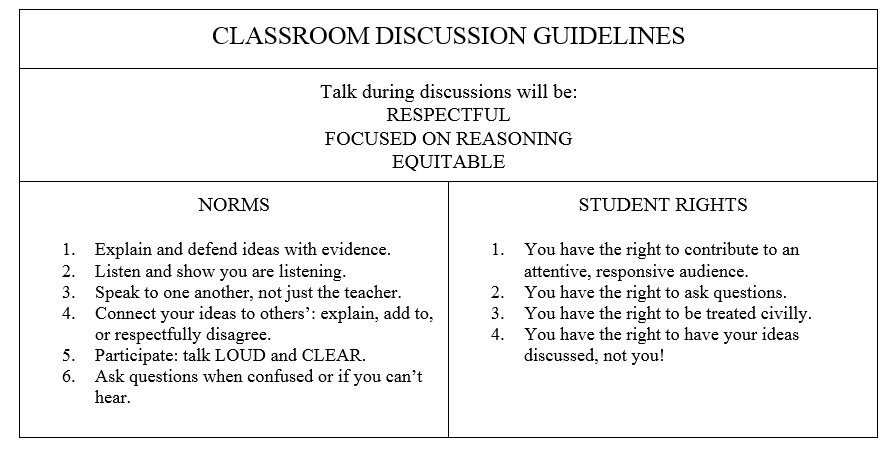
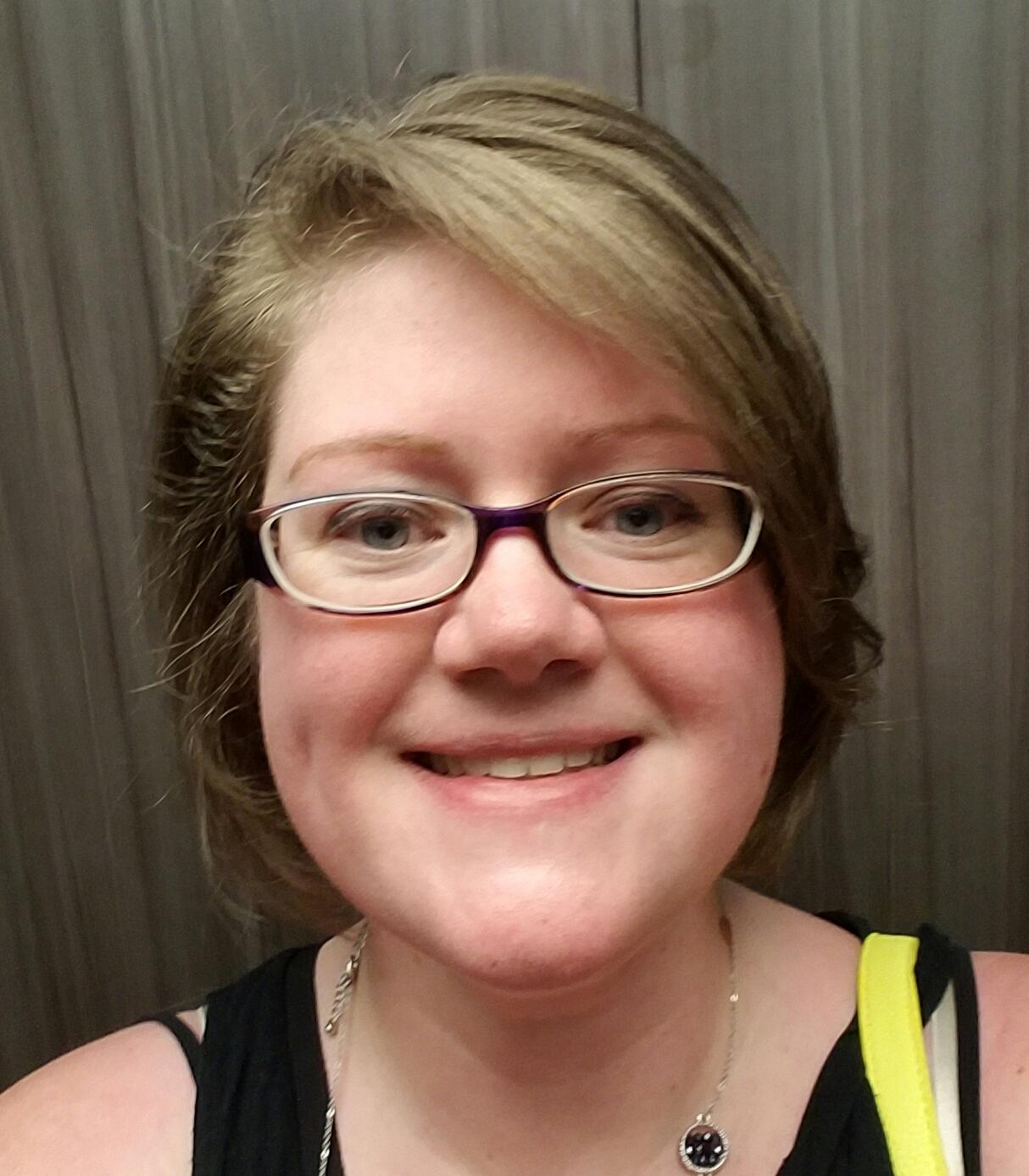
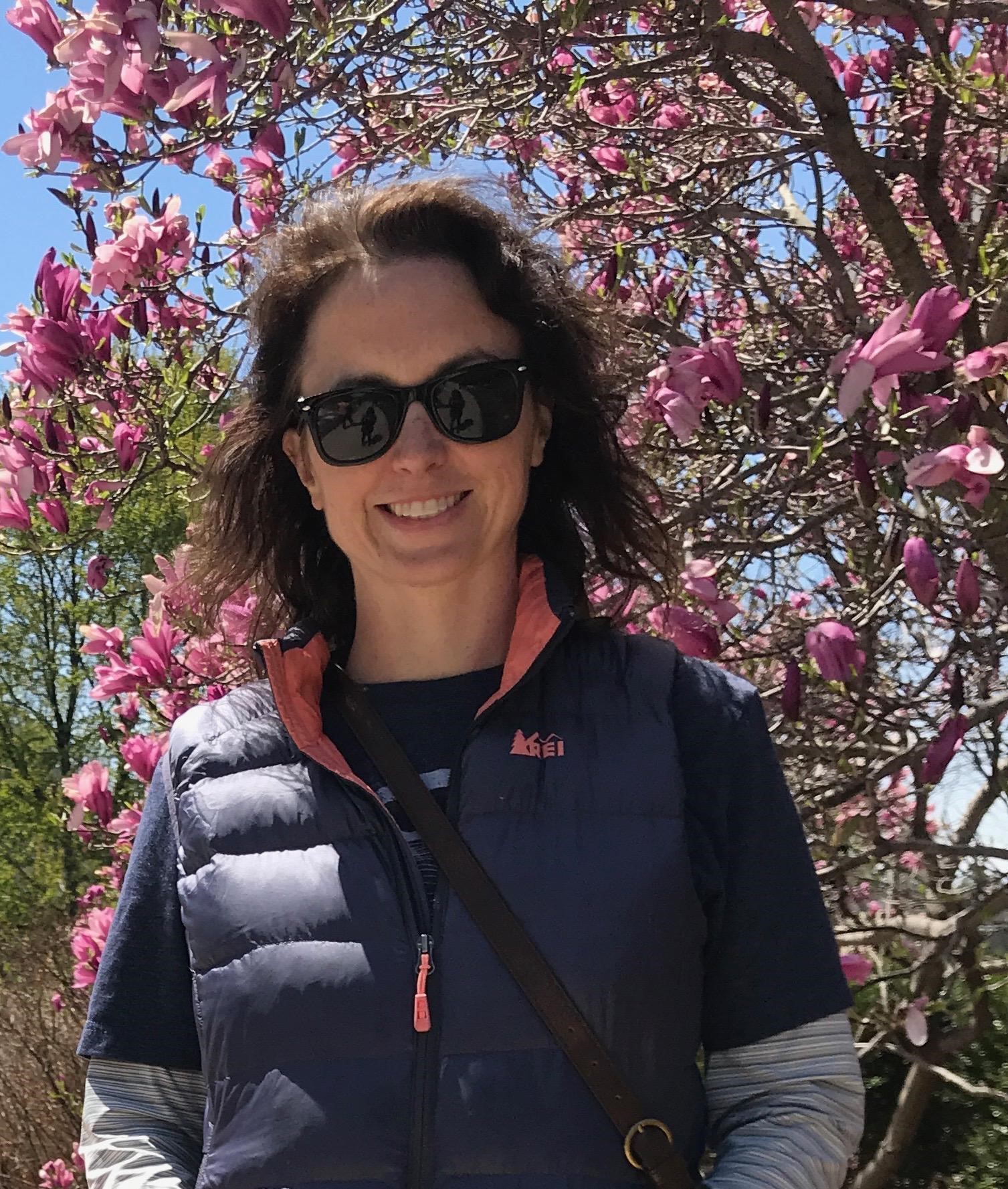
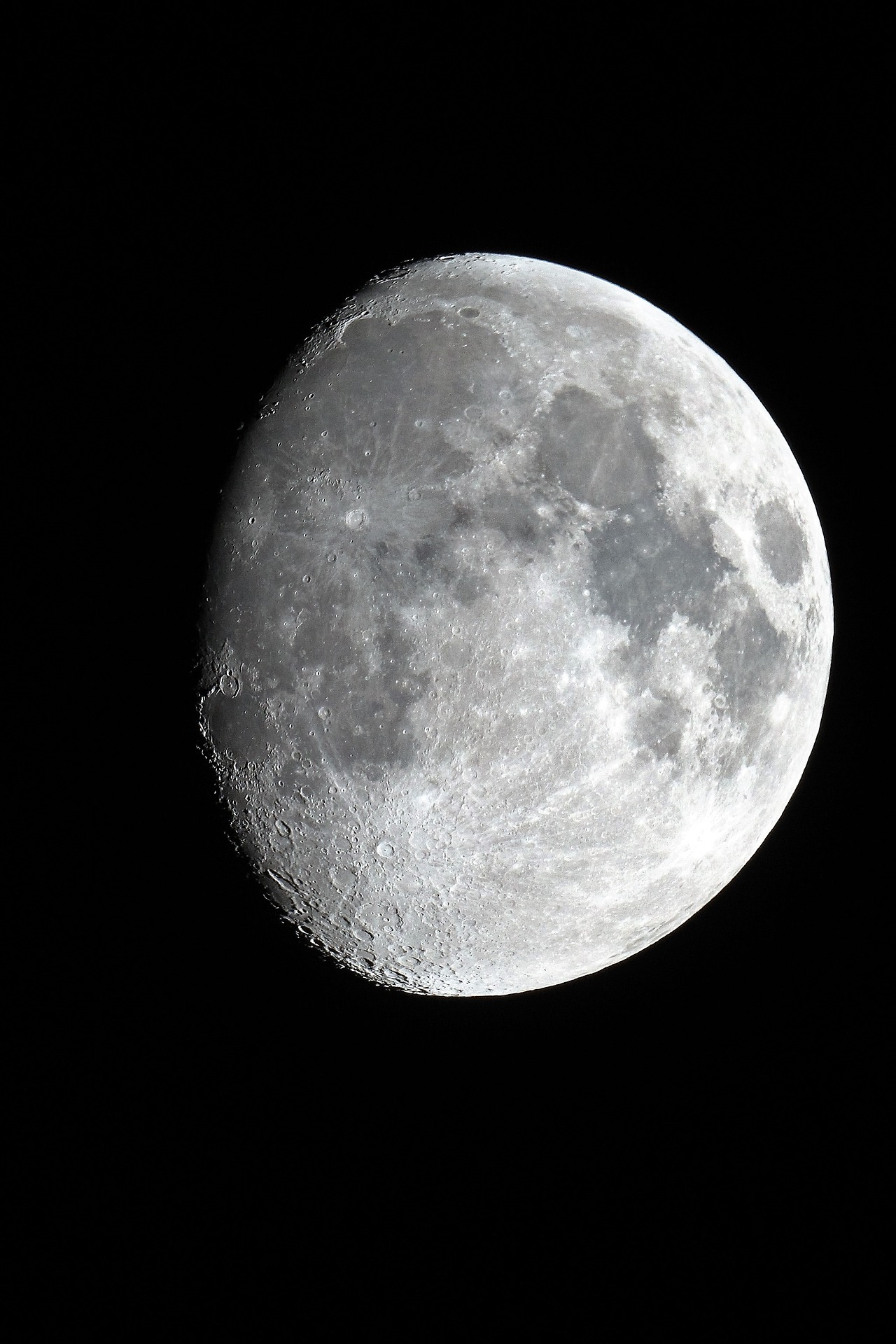 What are some ways to improve my students’ understanding of the phases of the moon? Are there more inquiry-based activities for grade 2 students?
What are some ways to improve my students’ understanding of the phases of the moon? Are there more inquiry-based activities for grade 2 students?